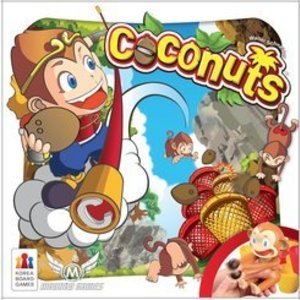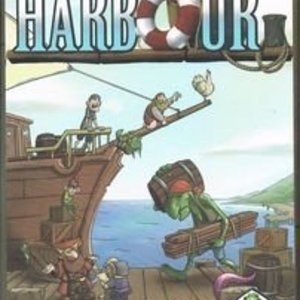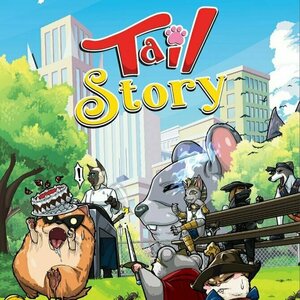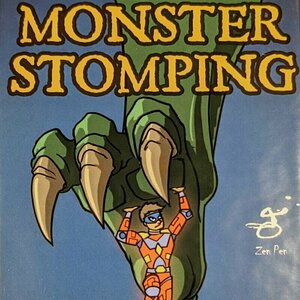
Green Gold
YouTube Channel
Green Gold Animation: Official YouTube Channel Green Gold has been a pioneer in creating wholesome...
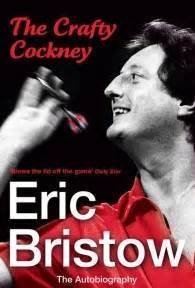
The Crafty Cokney
Book
Well this is certainly an interesting read if you grew up watching darts in the eighties. Eric...
Darts World Championship
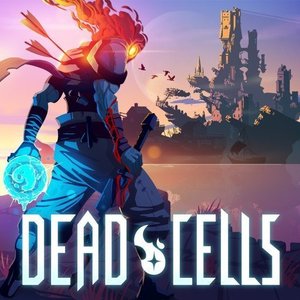
Dead Cells
Video Game Watch
Dead Cells is described as a "roguevania", a combination of procedurally-generated roguelike games...

We Came to Win
Podcast
Every four years, people all over the world turn their eyes, ears, and hearts toward the most...
Football world cup
Dean (6927 KP) rated Free Guy (2021) in Movies
Aug 13, 2021 (Updated Aug 13, 2021)
It's a real mix of Ready Player One meets the The Truman Show. A non playable Character in a game suddenly becomes alive and decides to make his own decisions after encountering a player in the game.
The film is funny and will be especially fun for those who do play video games. Feeling like a real life version of a GTA game. The SFX to recreate so much crazy video game action in real life is great.
Definitely an enjoyable film worth seeing at the cinema and one I can imagine watching multiple times in future.
Purple Phoenix Games (2266 KP) rated Harbour in Tabletop Games
Dec 19, 2019
In Harbour, you control a gobleeple (I am really horrible at this, but it’s a meeple in the shape of a goblin) who travels around town visiting buildings to enact their special abilities. Using these abilities will help you amass goods whose value is ever-changing on a uniquely-designed market board. Knowing when to sell your wood and livestock to purchase buildings is the key factor to creating a strategic path to income and winning the game of Harbour.
DISCLAIMER: I do not intend to cover every single rule included in the rule book, but will describe the overall game flow and major rule set so that our readers may get a sense of how the game plays. For more in depth rules, you may purchase a copy from the publisher directly or from your FLGS. Furthermore, there is an expansion to this game, but we are not reviewing it at this time. Should we review it in the future we will either update this review or post a link to the new material here. -T
To setup give each player a gobleeple of their color choice (I choose you, purple!), a player board of their choice – or randomly dealt, and one token of each good to later be placed on their warehouse spaces. Place the main market board in the middle of the table with one goods token per space on the market to indicate starting prices for each good. Have each player now assign goods to warehouse spaces not to exceed three total goods stored. Shuffle the main building cards and place out in a grid a number of cards equal to three plus the number of players (seven total in a four-player game). Determine the starting player and you are ready to begin!
On your turn you must move your gobleeple to another vacant building, even the starting one on your player mat, or another player’s built building (but you must pay them a good to do so). From there you may take advantage of any special abilities that building offers. It could be adjusting the prices of goods, trading one type of good for another, or allowing you to purchase buildings from the grid. Purchasing buildings brings the game closer to its end, as the end is triggered by a player purchasing their fourth building. The round continues until everyone has had equal amount of turns and the player with the highest VP in buildings wins! I will have you play the game to see the various abilities that each player mat and each building offer.
Components. This is a small game in a small box (ironically it’s a Scott Almes design – you know, of Tiny Epic fame). You are given lots of player mats that feature different characters and abilities that you can choose to emulate. These mats are great, laid out well, and have funny flavor text on them. Also included are the aforementioned painted wooden gobleeples in fun colors and with an even funner shrugging pose. To keep track of your goods and market values you use blocks with stickers applied. In addition to this is a giant stack of cards to represent the buildings you will be visiting and purchasing. I have sleeved mine and they all fit back in the box (even with a few promos included). Everything is of great quality. No problems at all for me, as per usual with Tasty Minstrel Games fare.
I do not own many market and economic games because usually they do not really interest me at all. I do have many worker placement games because I really enjoy the mechanic. This one, though, is special to me. It is one of the games I have Kickstarted that I feel really delivered and fires on all cylinders for me. Your opinions may vary if you have played it, but this game is an absolute gem. It is light, fast, and incredibly fun. There is a slight learning curve if you are not used to either economic or worker placement games, but after a few rounds it will all fall into place. If you are looking for a euro game in fun clothing, I highly recommend Harbour (and it’s a steal right now in stores). Purple Phoenix Games gives this one a rousing 10 / 12.
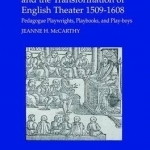
The Children's Troupes and the Transformation of English Theater 1509-1608: Pedagogue, Playwrights, Playbooks, and Play-Boys
Book
The Children's Troupes and the Transformation of English Theater 1509-1608 uncovers the role of the...
Purple Phoenix Games (2266 KP) rated Tail Story in Tabletop Games
Jul 1, 2020
Disclaimer: We were provided with a preview copy of Tail Story for the purposes of this review. Some of the components pictured are not final, and will be addressed in production. Also, I do not intend to rehash the entire rulebook, but rather provide an overview of the rules and game flow. -L
Tail Story is a competitive card game in which players are racing to become the most memorable pet in history! How? By partaking in various events and gathering a total of 4 Achievements. Here’s how it works. To setup, each player takes a player mat, and randomly draws a Queue Card. Players then get to choose a Character card – a pet from either the Canine, Feline, or Rodent & Friends type. Shuffle the Event cards, deal 15 to each player, everyone draws 5 cards to their hand, and the game is ready to begin! The player who drew Queue Card 1 is the first player, and play continues in numerical order.
Each turn consists of 5 steps: Draw, Play, Bonus, Deck Check, and End of Turn. The first step is always to Draw 1 card from your deck. In the Play Step, you choose one action to perform. Each player has 2 Action Points (AP) per turn, and those are spent here in the Play Step. All Event cards require either 1 or 2 AP to play, and the other standard actions in the Play Step require either 0 or 1 AP to perform (Check out the Reference Cards pictured below to see the possible actions). After performing 1 action, you move to the Bonus Step, where a player may choose to activate a Bonus ability. The Deck Check step is next. All players count how many cards remain in their Draw piles. If all decks still have at least 1 card, you jump back to the Play Step and perform another action. If any deck is out of cards, that player reshuffles their discard pile, and places a card from their hand face-down on their player mat to signify that they have collected an Achievement. Even if another player collects an Achievement on your turn, play then returns to you, and you jump back to the Play Step again. The last step is the End of Turn – a player decides to be done and ends their turn, discarding their hand down to 5 cards. The game ends when a player has collected their 4th Achievement.
Here’s a neat twist though – whenever you play a card, any opponent can choose to play a Stop card to prevent you from performing that action! And then, if you have a Stop card too, you could play it to cancel out their Stop card. This twist adds a strategic and competitive element to the game that elevates it to the next level. There’s a fun little element of role-play too that encourages you to get into your animal character – I’ll leave that for you to discover on your own!
I know that seems like quite a lot, but once you get into the swing of things, Tail Story plays pretty quickly. One thing I particularly like about this game is that it requires a decent amount of strategy. Everyone is racing to get through their Draw decks and collect Achievements, while at the same time hindering the progress of their opponents. Are you willing to risk a valuable Stop card to cancel the action of an opponent and hope that they don’t play a Stop card back to you? Should you play a card that could activate your Bonus ability now or wait for your next action to pull a fast one over on your opponents? Your strategy has to be adjustable on the fly depending on what cards your opponents are playing. There is no single right strategy to win, and the riskiness makes the game more exciting and engaging.
Another thing I really like about Tail Story is that there are really only 4 different Event cards that can be played. Yes, the artwork may vary, but ultimately the actions are the same. They rely on key text and color coding to communicate their uses, and after a few rounds, recognizing those effects is easy. One thing I wish is that the reference cards had these effect explanation instead of only being listed in the rulebook. Just for a quick glance if you need a reminder instead of having to look back in the rules for the full text. The reference cards do have the Turn Steps and possible Actions on them, which are helpful – don’t get me wrong!
I would recommend Tail Story at the higher player counts for maximum enjoyment. With only 2 players, it feels like it drags on a bit because it is only a back-and-forth game. With 3-4 players, you have more opponents with which to interact, and playing cards against others doesn’t feel as targeted and keeps the game play more light-hearted than cut-throat.
Let’s talk about components. As I mentioned earlier, this is only a preview copy of the game, so some elements are still not finalized. The player mats are only paper right now, but I anticipate that they will be sturdier in final production. That being said, the information on the player mats is awesome. They provide enough information to understand where everything goes, while not being so wordy that they are confusing. I am excited to see what kind of color scheme they come up with for the player mats, to match the artwork of the cards. On to the cards – they are amazing. For starters, the cards are nice, sturdy, and thick. Definitely a game that will not easily succumb to bent corners or torn cards. The actual artwork of the cards is perfect. Each card is detailed, colorful, and appropriate for their respective card names. Probably the coolest part of the cards is that they all have a holographic finish on them. This really makes the artwork pop and makes you admire every card instead of just reading the text. That being said, the holographic finish makes the cards stick together a little more – not a huge detriment, but something to be aware of and careful with when drawing or playing cards! The game box is a cute little box with a magnet closure that is perfect for easy transportation.
Overall, I would say that I love Tail Story. It’s fun, fast-paced, strategic, and exciting. Being able to choose from 3 Character types (Canine, Feline, Rodent & Friends) gives you the opportunity to play a different game, with a different strategy, every time. With more plays, the special text of cards is engrained in your head, which means that it can play even faster and with no interruptions to check rules. It’s definitely a memorable game, and one that I can see myself pulling out often on game nights. I am excited to see this campaign launch, and for the sake of all animal dreams out there, you should check it out!
Purple Phoenix Games (2266 KP) rated Monster Stomping: Heroes in Tabletop Games
Dec 15, 2020
Ok, so I don’t have these monsters and superheroes in my area. I wish we did. In any case, Monster Stomping: Heroes is a card game of building heroes to protect your city and also building monsters to attack other cities. The first player to have six City Defense cards in their tableau will win!
DISCLAIMER: We were provided a prototype copy of this game for the purposes of this review. These are preview copy components, and I do not know for sure if the final components will be any different from these shown. Also, it is not my intention to detail every rule in the game, as there are just too many. You are invited to download the rulebook, back the game through the Kickstarter campaign, or through any retailers stocking it after fulfillment. -T
To setup, each player will receive one monster body card, one hero body card, and one city card to be placed in front of them on the table. The remaining setup cards can be placed back in the box. The remaining cards will be shuffled to create the large draw deck. Each player is dealt five cards from this deck to create their hand and the game may now begin!
On a player’s turn they will have a choice of three actions to take: Play, Discard Your Hand, or Attack! When the active player decides to Play they will first draw cards to increase their hand to six cards. Next they may play a card face-up on the table. These cards are Monster Powers, Hero Powers, or City Defense cards. Both Monster and Hero Powers are mix-and-match body parts that add value to the Attack phase. City Defense cards are placed around the city card. Six of these are needed to win. After one of these three card types are played to the table the player may also play a blue-bordered Special Card. The Special Cards could allow players to view the contents of an opponent’s hand, or skip a player’s turn, or even discard a City Defense card.
A player may dislike their hand of cards and wish to Discard Your Hand any number of cards. Once done the player will draw back up to six cards and then discard one to return to the hand limit of five cards.
If the active player is feeling lucky or particularly surly they may Attack! another player’s city. During an Attack! the attacking player and defending player will both roll 1d6. The result of the die roll is then added to any bonuses afforded them from their built Monster (attacker) or Hero (defender). At this time any involved player may play a Combat card from their hand to tip the scales of battle. These will either add or subtract values from the Monster or Hero, or block the Monster altogether, or even switch a player’s Hero and Monster values during the battle. The winning attacker then steals one of the defender’s City Defense cards and places it in their own city. The winning defender will receive the Morale Boost meeple to earn a +1 to their hero the next time they are attacked.
Once the active player has completed their turn play continues to the next player until a sixth City Defense card has been placed. When this happens the next player is allowed one more turn to either earn their sixth City Defense card or thwart the previous player by causing them to lose their sixth card. Play continues in this fashion until one player is the ultimate winner and completely defends their city!
Components. Again, this is a prototype copy of the game and I do not know if these will be updated in any fashion in the final copy. That said, we were provided a box with 2d6, a Morale Boost meeple, and a bunch of cards. The dice are fine and can be switched out with prettier ones if you prefer (I might), and the meeple is an interesting shape and excellent orange color. The cards are matte finished and the art on them is pretty good. The layout of the cards is easy to use. In fact, the layout of the cards (especially the Special and Combat cards) are incredibly reminiscent of the cards in Munchkin.
Actually, the entire time I was playing Monster Stomping: Heroes I could not help but feel like I was playing a better version of Munchkin. It is essentially the same game: the winner has to get to six City Defense cards (10th level in Munchkin), uses cards to debilitate opponents (same in Munchkin), creates better toons in front of themselves (same in Munchkin), and has the additional ability of a helper to aid in battle (same in Munchkin). Let me reiterate that this game is a BETTER version of Munchkin, even though it is extremely similar.
What I really like about this one is the quick play that can be had and the ability to be played by two players. Since I’m comparing it to Munchkin now, a game of Munchkin can easily take a frustrating two or more hours to complete. I say frustrating because all players end up simply ganging up on their opponents at the end just trying to prevent them from winning. While the same is partially true in Monster Stomping, there are only six cards to be collected before becoming the winner and some players may become untouchable at times due to their impressive Monster or Hero-building skills. Another aspect I truly appreciate and enjoy here is that the game can be played with only two players, while Munchkin requires at least three. That may not seem like a huge difference, but if I can play a game at home with my wife without having to add house rules or other ways to doctor up the rules, then I am a much happier man.
I enjoy building the different characters in the game and seeing what kind of abomination I end up with at game’s end. This is much more personal preference for me because building a character in Munchkin is handled much the same way, but differently. For those who have played Munchkin, I am sure you understand.
So all in all, if you are a closet fan of Munchkin and want to protect your gamer cred, you certainly need to check out Monster Stomping: Heroes. It will give you all the good parts of Munchkin but filter out the underwhelming or over-stuffed feelings. It plays quickly, and gives players lots of options to build their characters. The game is easy to teach and learn, and you may even wish to play several games in a row. While I have compared this to Munchkin quite a bit, Monster Stomping: Heroes is its own game and offers several differences to players. If you have been looking for a Munchkin replacement, I may have found it for you. You’re welcome.
